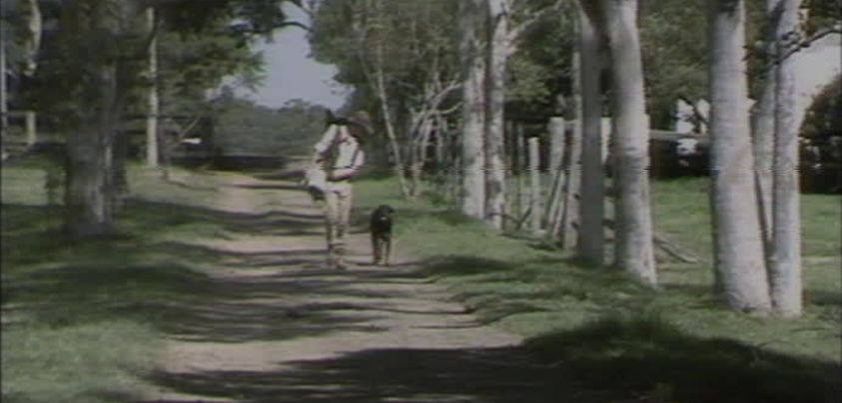 This story by Barbara Baynton paints a graphic picture of the isolation and dangers faced by women living in ‘outback’ Australia during the 19th century. A ‘swagman’ traveling the countryside looking for work visits a woman on a farm whose husband is away. She does not like the way he looks at her, and locks herself and her baby in their house. The man is about to break in when they hear a horse rider coming. The woman runs outside and calls for help. However, when the horse rider hears and then sees her, he races away in fright. More…
This story by Barbara Baynton paints a graphic picture of the isolation and dangers faced by women living in ‘outback’ Australia during the 19th century. A ‘swagman’ traveling the countryside looking for work visits a woman on a farm whose husband is away. She does not like the way he looks at her, and locks herself and her baby in their house. The man is about to break in when they hear a horse rider coming. The woman runs outside and calls for help. However, when the horse rider hears and then sees her, he races away in fright. More…
Archives
Where Are You Going, Where Have You Been?
 The plot of this award-winning story by Joyce Carol Oates in a nutshell: attractive, self-absorbed, rebellious teen under Why can’t you be like your big sister? pressure meets a predatory psychopath with, one imagines, predictable results. What sets the story apart is the way Oates, using dialogue alone, transforms a cautionary tale for young women into a psychological thriller that gradually develops into a horror story. Themes include search for identity, independence, sexuality and control, appearance vs. reality, malevolence, psychological manipulation and (if you believe Connie really sacrificed herself for her family), self-sacrifice. More…
The plot of this award-winning story by Joyce Carol Oates in a nutshell: attractive, self-absorbed, rebellious teen under Why can’t you be like your big sister? pressure meets a predatory psychopath with, one imagines, predictable results. What sets the story apart is the way Oates, using dialogue alone, transforms a cautionary tale for young women into a psychological thriller that gradually develops into a horror story. Themes include search for identity, independence, sexuality and control, appearance vs. reality, malevolence, psychological manipulation and (if you believe Connie really sacrificed herself for her family), self-sacrifice. More…
Prey
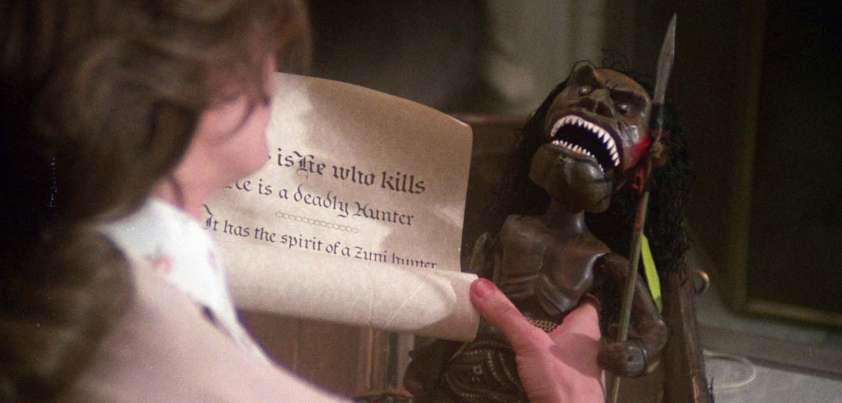 In this story by Richard Matheson, a woman buys her new boyfriend a Zuni fetish doll for his birthday. A scroll inside the box reads THIS IS HE WHO KILLS…. HE IS A DEADLY HUNTER. As she prepares to shower, the doll turns out to be the real deal. It escapes the gold chain designed to keep the hunter’s spirit locked inside and sets off in search of prey. Although the girl and the spirit appear temporarily happy with the outcome, the girl’s mother may not be! Themes include control, isolation, violence, fear, determination, the supernatural. More…
In this story by Richard Matheson, a woman buys her new boyfriend a Zuni fetish doll for his birthday. A scroll inside the box reads THIS IS HE WHO KILLS…. HE IS A DEADLY HUNTER. As she prepares to shower, the doll turns out to be the real deal. It escapes the gold chain designed to keep the hunter’s spirit locked inside and sets off in search of prey. Although the girl and the spirit appear temporarily happy with the outcome, the girl’s mother may not be! Themes include control, isolation, violence, fear, determination, the supernatural. More…
The Feather Pillow
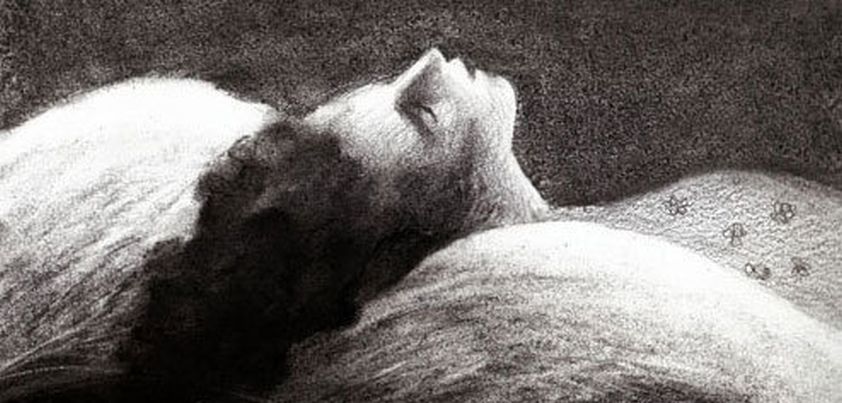 In this story by Horacio Quiroga a healthy young woman slowly wastes away and dies over the three months following her wedding. Her husband’s impassive manner, coupled with spending her days alone in his cavernous, unwelcoming house, destroy her childhood fancies of married life. Her fate is sealed when she decides to cast a veil over her former dreams and live like a sleeping beauty in the hostile house. Later, we learn that it is not their house that is hostile, but her feather pillow. Themes include innocence, love and marriage, isolation and loneliness, disillusionment, depression and death. More…
In this story by Horacio Quiroga a healthy young woman slowly wastes away and dies over the three months following her wedding. Her husband’s impassive manner, coupled with spending her days alone in his cavernous, unwelcoming house, destroy her childhood fancies of married life. Her fate is sealed when she decides to cast a veil over her former dreams and live like a sleeping beauty in the hostile house. Later, we learn that it is not their house that is hostile, but her feather pillow. Themes include innocence, love and marriage, isolation and loneliness, disillusionment, depression and death. More…
The Fall of the House of Usher
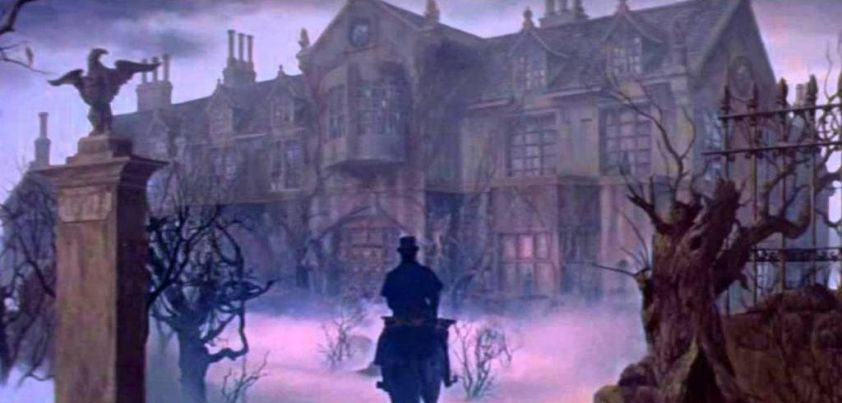 This Edgar Allan Poe story is a masterpiece of the Gothic Horror genre. A man visits a childhood friend in his crumbling family mansion to help him cope with an acute attack of depression. An interdependent relationship exists between the friend, his twin sister and the house (some say a shared soul), which ends in the downfall of all three. The story’s most remarkable feature is the almost total lack of physical action. The feeling of terror and impending doom develops solely from Poe’s descriptions of setting, characters, and atmosphere. Themes: isolation, friendship, fear, madness, the supernatural. More…
This Edgar Allan Poe story is a masterpiece of the Gothic Horror genre. A man visits a childhood friend in his crumbling family mansion to help him cope with an acute attack of depression. An interdependent relationship exists between the friend, his twin sister and the house (some say a shared soul), which ends in the downfall of all three. The story’s most remarkable feature is the almost total lack of physical action. The feeling of terror and impending doom develops solely from Poe’s descriptions of setting, characters, and atmosphere. Themes: isolation, friendship, fear, madness, the supernatural. More…
Secret Worship
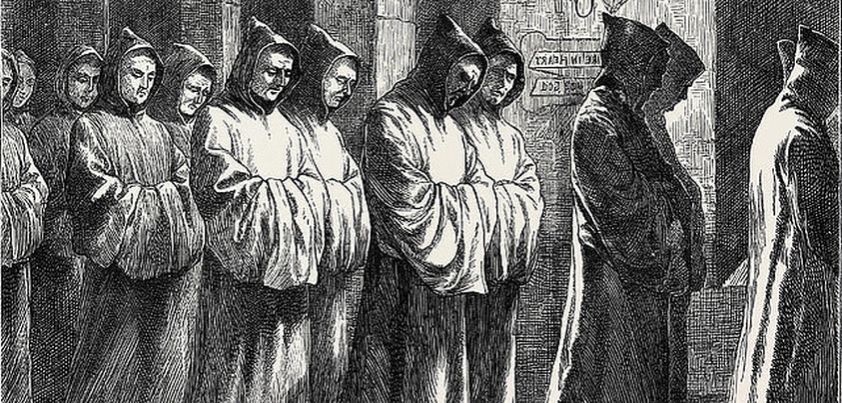 In this story by Algernon Blackwood, a man makes a spur of the moment decision to visit his old boarding school in a remote German village. Although life and discipline inside the fortress-like school operated by a devout Protestant brotherhood was strict, he recalls his time there fondly. When he arrives, everything appears unchanged and he is welcomed with open arms. However, leaving is not so easy… the not-so-devout brotherhood was a cover for a satanic cult which now has eyes on his soul! Themes include nostalgia, isolation, appearances vs. reality, satanism, human sacrifice, chance, the supernatural. More…
In this story by Algernon Blackwood, a man makes a spur of the moment decision to visit his old boarding school in a remote German village. Although life and discipline inside the fortress-like school operated by a devout Protestant brotherhood was strict, he recalls his time there fondly. When he arrives, everything appears unchanged and he is welcomed with open arms. However, leaving is not so easy… the not-so-devout brotherhood was a cover for a satanic cult which now has eyes on his soul! Themes include nostalgia, isolation, appearances vs. reality, satanism, human sacrifice, chance, the supernatural. More…
The Pale Man
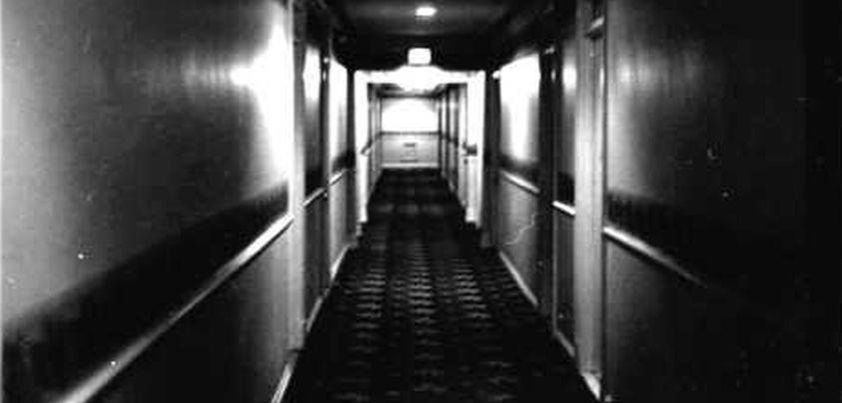 This is a short horror story by little known author Julius Long. A doctor tells a man suffering from nerves to have a long holiday somewhere quiet. The man checks into a hotel in a small town. However, the townspeople are unfriendly towards him and he finds it a lonely, dreary place. His only hope for stimulating conversation appears to be a tall, pale man staying in another room of the hotel. The pale man has some very strange ways, so the man asks the hotel room clerk about him. The room clerk tells him there is no such guest. More…
This is a short horror story by little known author Julius Long. A doctor tells a man suffering from nerves to have a long holiday somewhere quiet. The man checks into a hotel in a small town. However, the townspeople are unfriendly towards him and he finds it a lonely, dreary place. His only hope for stimulating conversation appears to be a tall, pale man staying in another room of the hotel. The pale man has some very strange ways, so the man asks the hotel room clerk about him. The room clerk tells him there is no such guest. More…
The Black Cat
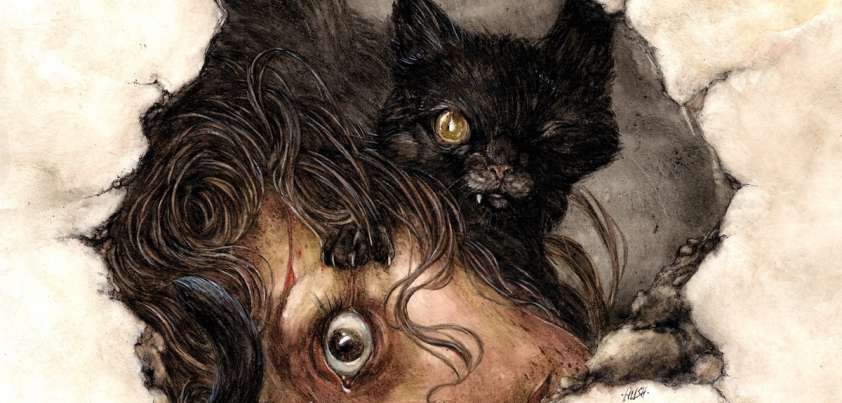 The Stephen Kings of the writing world tend to use external, often supernatural forces as their instruments of terror. With Edgar Allan Poe, the horror generally develops from the tortured mind of man. The protagonist here has lost his mind to alcoholism. Like many alcoholics, he becomes violent when in a drunken state. This is initially directed towards family pets. Extreme cruelty to animals can indicate psychopathic tendencies, and this proves true later in the story when he shows no remorse for any of his actions, including the murder of his wife. Themes: alcoholism, mental illness, brutality, death. More…
The Stephen Kings of the writing world tend to use external, often supernatural forces as their instruments of terror. With Edgar Allan Poe, the horror generally develops from the tortured mind of man. The protagonist here has lost his mind to alcoholism. Like many alcoholics, he becomes violent when in a drunken state. This is initially directed towards family pets. Extreme cruelty to animals can indicate psychopathic tendencies, and this proves true later in the story when he shows no remorse for any of his actions, including the murder of his wife. Themes: alcoholism, mental illness, brutality, death. More…
The Yellow Wallpaper
 This partly autobiographical story by Charlotte Gilman describes the experiences of a creative, imaginative woman suffering from post-natal depression. She follows the then (1890s) generally accepted medical advice to spend her time “resting” in semi-isolation. Gilman skillfully uses the setting to turn an otherwise clinical account of a mental breakdown into a chilling psychological horror story. Although living in a colonial mansion amid idyllic countryside, the poor woman spends most of her time in a prison-like room with creepy wallpaper. Major themes include the fallibility of doctors and our reluctance to question them, mental illness, freedom and self-expression, and gender roles in society. More…
This partly autobiographical story by Charlotte Gilman describes the experiences of a creative, imaginative woman suffering from post-natal depression. She follows the then (1890s) generally accepted medical advice to spend her time “resting” in semi-isolation. Gilman skillfully uses the setting to turn an otherwise clinical account of a mental breakdown into a chilling psychological horror story. Although living in a colonial mansion amid idyllic countryside, the poor woman spends most of her time in a prison-like room with creepy wallpaper. Major themes include the fallibility of doctors and our reluctance to question them, mental illness, freedom and self-expression, and gender roles in society. More…
Silent Snow, Secret Snow
 Conrad Aiken’s Silent Snow, Secret Snow is a psychological horror fantasy. It begins with a twelve-year-old boy (Paul) imagining overnight snowfalls. This leads to a growing fascination with snow, the thought of which provides relief from the mundane routine of his daily life, the ugliness of the world around him, parent-child conflicts, and awakening sexuality. As the imagined snowfalls increase, Paul begins to lose touch with reality. In the disturbing climax, his boy’s “snow voices” come alive and he completely withdraws into himself as they tell him a story. Major themes: mental illness, concealment, detachment and alienation. More…
Conrad Aiken’s Silent Snow, Secret Snow is a psychological horror fantasy. It begins with a twelve-year-old boy (Paul) imagining overnight snowfalls. This leads to a growing fascination with snow, the thought of which provides relief from the mundane routine of his daily life, the ugliness of the world around him, parent-child conflicts, and awakening sexuality. As the imagined snowfalls increase, Paul begins to lose touch with reality. In the disturbing climax, his boy’s “snow voices” come alive and he completely withdraws into himself as they tell him a story. Major themes: mental illness, concealment, detachment and alienation. More…
Arabesque: The Mouse
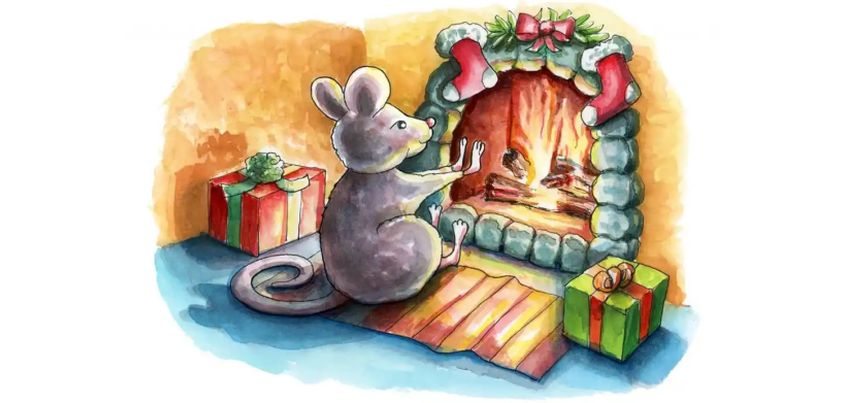 In this psychological horror story by A. E. Coppard, an idealistic man who has withdrawn from society due to constant rebuff sits alone in a mouse-infested garret. As he watches the antics of a mouse in front of his fireplace, his mind wanders to the death of his mother and loss of the only woman he ever loved. When he comes back to reality, the mouse is sitting before a trap with its forepaws torn off. Association of this with his mother’s grisly death sends him to the brink of madness. Themes include mother-child relationships, loss, depression, despair, shame, insanity. More…
In this psychological horror story by A. E. Coppard, an idealistic man who has withdrawn from society due to constant rebuff sits alone in a mouse-infested garret. As he watches the antics of a mouse in front of his fireplace, his mind wanders to the death of his mother and loss of the only woman he ever loved. When he comes back to reality, the mouse is sitting before a trap with its forepaws torn off. Association of this with his mother’s grisly death sends him to the brink of madness. Themes include mother-child relationships, loss, depression, despair, shame, insanity. More…
The Signal-man
 Many Charles Dickens stories feature ghosts. Part of the attraction of The Signal-man is that, although generally considered one of these, there is no hard evidence of a ghost. Dickens masterfully uses setting to create a forbidding, unearthly atmosphere, and then leaves the question of the ghost to the reader. Like all first-person stories, the narrator’s version is open to misinterpretation and bias. The only evidence of the supernatural are the ghostly sightings described by the (now dead) signal-man, and some (potentially coincidental) shared expressions and gestures. Themes: duty & responsibility, fate, isolation, guilt, sanity, the supernatural. More…
Many Charles Dickens stories feature ghosts. Part of the attraction of The Signal-man is that, although generally considered one of these, there is no hard evidence of a ghost. Dickens masterfully uses setting to create a forbidding, unearthly atmosphere, and then leaves the question of the ghost to the reader. Like all first-person stories, the narrator’s version is open to misinterpretation and bias. The only evidence of the supernatural are the ghostly sightings described by the (now dead) signal-man, and some (potentially coincidental) shared expressions and gestures. Themes: duty & responsibility, fate, isolation, guilt, sanity, the supernatural. More…
The Outsider
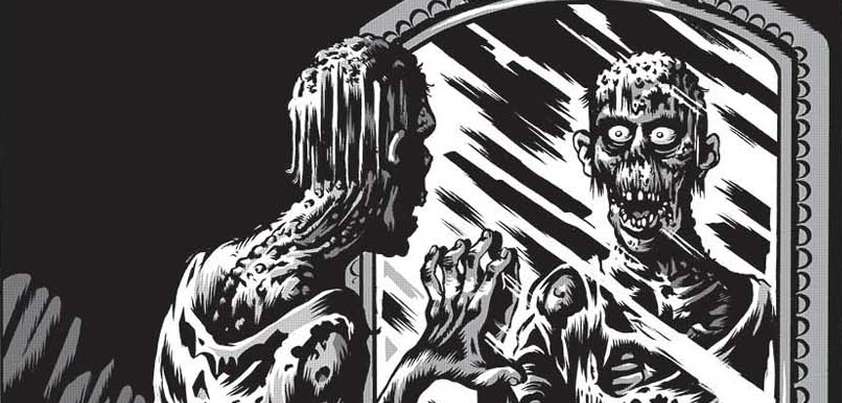 H. P. Lovecraft was a pioneer of cosmic horror, a sub-genre in which gothic settings and “other-worldly” elements replace shock and gore. A feature of his writing is nightmare-like plot twists that defy logic or reason. Here, a man grows up alone in a decaying castle set among frightening woods. When he climbs the crumbling castle tower to look further afield, he finds a stone slab that leads to an earth-like world above the clouds. He is excited to encounter other people, but soon learns a frightening truth. Themes include alternative reality, isolation and loneliness, social rejection, alienation, self-discovery. More…
H. P. Lovecraft was a pioneer of cosmic horror, a sub-genre in which gothic settings and “other-worldly” elements replace shock and gore. A feature of his writing is nightmare-like plot twists that defy logic or reason. Here, a man grows up alone in a decaying castle set among frightening woods. When he climbs the crumbling castle tower to look further afield, he finds a stone slab that leads to an earth-like world above the clouds. He is excited to encounter other people, but soon learns a frightening truth. Themes include alternative reality, isolation and loneliness, social rejection, alienation, self-discovery. More…
The Witch
 Although very short (just over 1,400 words), there are enough dark elements in this Shirley Jackson story to unsettle most readers. An imaginative four-year-old travelling on a train with his mother and infant sister attracts the attention of a man who recounts how much he loved his own sister. The man then relates how, after killing and dismembering his sister, he fed her head to a bear. The story turns on who or what the man is, and what effect his story may have on the boy. Themes include parental inattention, boredom, imagination, witchcraft, innocence and its possible manipulation, violence. More…
Although very short (just over 1,400 words), there are enough dark elements in this Shirley Jackson story to unsettle most readers. An imaginative four-year-old travelling on a train with his mother and infant sister attracts the attention of a man who recounts how much he loved his own sister. The man then relates how, after killing and dismembering his sister, he fed her head to a bear. The story turns on who or what the man is, and what effect his story may have on the boy. Themes include parental inattention, boredom, imagination, witchcraft, innocence and its possible manipulation, violence. More…
The Boarded Window
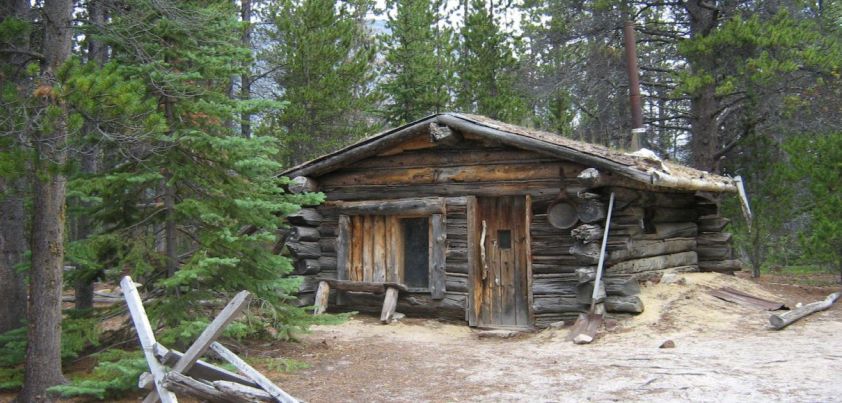 In this short gothic horror story from Ambrose Bierce, a boarded window symbolizes a grieving and possibly PTSD affected man’s desire to shut himself off from the outside world. Murlock shows no signs of traditional mourning over his wife’s passing, so his decision to live as he does could well result from a sense of shame and/or guilt over his part in her death. As we have only his version of the night’s events, it could even be that (with or without a panther) his wild shot was the reason for her throat wound! Themes: isolation, death, shame/guilt, loneliness. More…
In this short gothic horror story from Ambrose Bierce, a boarded window symbolizes a grieving and possibly PTSD affected man’s desire to shut himself off from the outside world. Murlock shows no signs of traditional mourning over his wife’s passing, so his decision to live as he does could well result from a sense of shame and/or guilt over his part in her death. As we have only his version of the night’s events, it could even be that (with or without a panther) his wild shot was the reason for her throat wound! Themes: isolation, death, shame/guilt, loneliness. More…